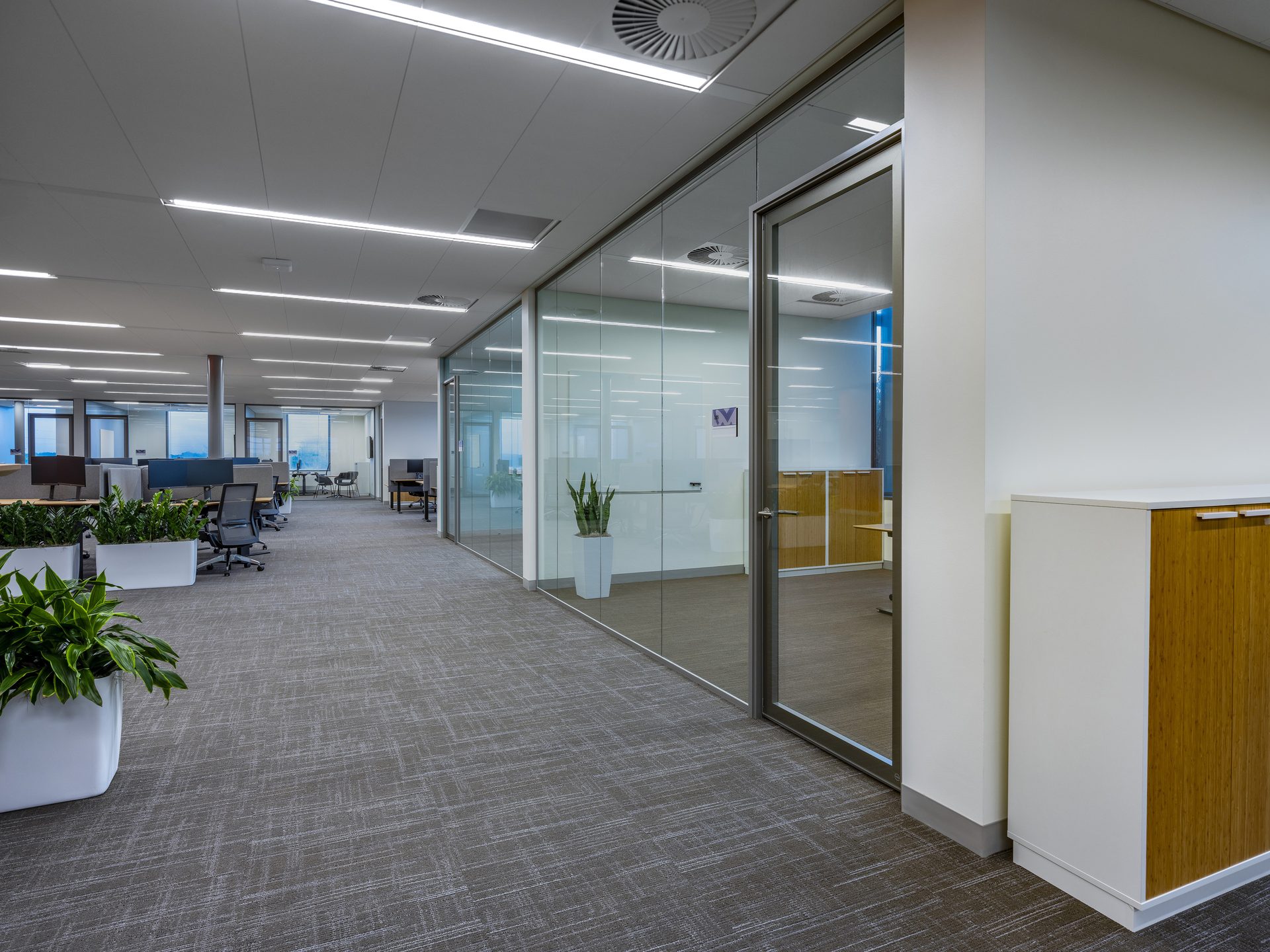



When Denmark Meets Texas
New global water utility headquarters is energy-efficient and LEED-certified.
A global leader in water technology based in Bjerringbro, Denmark, Grundfos is committed to pioneering solutions to the world’s water and climate challenges and improving the quality of life for people. The new Grundfos Global Water Utility Headquarters, located in Brookshire, Texas, is approximately 30 miles from downtown Houston.
“Grundfos has manufacturing that already existed in Brookshire,” explains Michael Franzen, senior regional manager for facilities and machining at Grundfos Global Water Utility Headquarters. “We decided that we wanted to be near this location for customer visits, the market for available technical skills and proximity to educational institutions.”
The 45,000-square-foot facility houses more than 100 employees working in sales, operations, engineering, HR, finance and other support functions.
“From the beginning, we wanted the design to be a culmination of Danish architecture and Texas style,” Franzen continues. “Sleek, modern and simplistic. The initial design was developed by Grundfos architects, who then collaborated with the selected general contractor. The design was based on our needs, values and sustainability initiatives.”
Harvey Builders served as the project’s contractor, collaborating with architectural firm PGAL and acoustic engineer SLR Consulting. The entire workspace features advanced acoustic ceiling systems, installed by AECO Interior Contractors to meet the project’s aesthetic, performance and sustainability goals. Demonstrating its commitment to sustainability at a global and local level, Grundfos is pursuing LEED Platinum certification for its new regional center, the highest available building certification through the U.S. Green Building Council.
Aligned Values, Shared Vision
In addition to manufacturing energy- and water-efficient pumping solutions, Grundfos enthusiastically supports the United Nations’ Sustainable Development Goals.
Grundfos and SLR also join with companies worldwide in leading the zero-carbon transition by setting emissions reduction targets through the science-based targets initiative. Science-based targets provide companies with a clearly defined path to reduce emissions in line with the Paris Agreement goals.





Achieving LEED Platinum
Following LEED criteria, buildings can reduce carbon emissions, energy use, water consumption and landfill waste. Aspiring to earn LEED Platinum certification, locally sourced and environmentally responsible building materials were verified for the building’s construction and interior build-out.
PGAL’s design team specified acoustic stone wool ceiling panels and used a 1200 15/16-inch ceiling suspension system, along with a module system. Helping architects, building owners and tenants make informed decisions about their material ingredients, some manufacturers offer health product declarations and UL-certified environmental product declarations.
Optimized Acoustics and Well-Being
Sustainability and acoustical performance objectives were top priorities for the Headquarters, shared by PGAL and SLR. “Platinum certification was Grundfos’ edict and a contract parameter,” Bass explains. “The acoustical performance was one of those many unnegotiable credits that had to be met.”
SLR Consulting’s project engineer, Nick Block, PE Acoustics, LEED AP, assisted PGAL with performance-based ceiling product selections. To produce an optimal acoustic experience that complied with LEED acoustic requirements, the final design combined sound-absorbing stone wool ceiling systems with an NRC of 0.95, sound-insulating full-height walls with the correct sound transmission class rating and appropriate background noise levels.
“Acoustics were a key consideration, because of the open concept and design,” says Franzen. “We ended up with large open areas that don’t feel or sound acoustically empty.”
Daylight and Danish Design
The bright white Rockfon Sonar ceiling panels used reflect 85 percent of light from their surface. “The lighting and reflectance values of all finish surfaces was another critical aspect of design with LEED lighting quality and daylight credits,” says Bass. “These were also non-negotiable credits to achieve, and the reflective quality of the smooth white panels was a critical component, especially to offset the darker non-reflective floor finishes.”
Along with supporting energy-efficient lighting, the white ceilings’ neat, clean appearance also highlights the desired, contemporary architectural style. “Grundfos’ own Danish architect and engineers drove the design and aesthetic choices,” says Bass.
Creating visual continuity and uniformity throughout the office’s open floor plan, PGAL chose large-format panels with a fully concealed edge design. The close-fitting edges of the panels minimize the visible grid in favor of a monolithic feel.
As an industry leader, Grundfos’ investment in quality, sustainable materials and products supports a long-lasting, attractive, comfortable and productive workplace for its employees in Brookshire, Texas.
